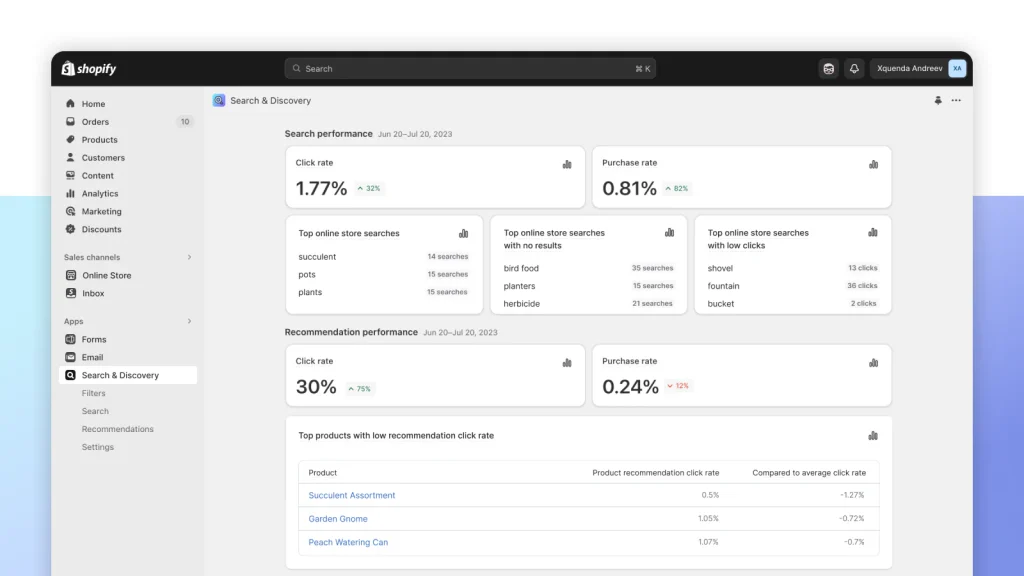
In today’s fast-paced digital world, businesses need efficient, scalable, and user-friendly platforms to create and manage their online stores. Shopify has emerged as one of the most popular e-commerce platforms, enabling entrepreneurs and established businesses to sell products and services online with ease. This blog delves deep into Shopify, exploring its features, benefits, drawbacks, pricing, and how businesses can maximize its potential.
What is Shopify?
Shopify is a cloud-based, software-as-a-service (SaaS) platform that provides businesses with the tools necessary to set up, run, and manage an online store. Founded in 2006 by Tobias Lütke, Daniel Weinand, and Scott Lake, Shopify has grown into a powerhouse in the e-commerce industry, serving millions of businesses worldwide.
Unlike self-hosted solutions like WooCommerce, Shopify handles hosting, security, and updates, making it a hassle-free solution for those looking to enter the world of e-commerce.
Features of Shopify
Shopify offers an extensive range of features that cater to different business needs. Some of its key features include:
1. Customizable Storefronts
Shopify provides a variety of professionally designed themes, both free and paid, that allow users to create aesthetically pleasing online stores. These themes are customizable, allowing businesses to align their store design with their brand identity.
2. Easy Product Management
Adding, updating, and managing products is seamless with Shopify. The platform supports multiple product variations, inventory tracking, and bulk product uploads.
3. Secure Payment Processing
Shopify integrates with over 100 payment gateways, including Shopify Payments, PayPal, Stripe, and Apple Pay, making transactions smooth and secure.
4. Mobile Optimization
With a mobile-first approach, Shopify ensures that stores are fully responsive and work seamlessly across all devices.
5. SEO and Marketing Tools
Shopify offers built-in SEO features, including customizable meta tags, sitemaps, and URL structures. Additionally, it supports marketing tools such as email campaigns, social media integration, and discount codes.
6. Multi-Channel Selling
Businesses can sell their products on multiple platforms, including Facebook, Instagram, Amazon, and eBay, directly from Shopify’s dashboard.
7. Robust Analytics and Reporting
Shopify provides detailed reports on sales, customer behavior, and product performance, helping businesses make data-driven decisions.
8. App Store for Extended Functionality
With thousands of third-party apps available in the Shopify App Store, businesses can enhance their store’s functionality with additional features such as customer reviews, loyalty programs, and live chat support.
9. 24/7 Customer Support
Shopify offers round-the-clock support via live chat, email, and phone to help businesses troubleshoot issues quickly.

Benefits of Using Shopify
1. Ease of Use
Shopify is designed for both beginners and experienced users, offering a user-friendly interface that requires no coding skills.
2. Scalability
Whether you are a small business or a large enterprise, Shopify grows with you. Its infrastructure can handle everything from a few orders to thousands per day.
3. Security and Reliability
With SSL certification and Level 1 PCI compliance, Shopify ensures that customer data is protected, reducing the risk of cyber threats.
4. Diverse Payment Options
Shopify supports multiple payment gateways, ensuring a seamless checkout process for customers worldwide.
5. Global Reach
Shopify enables businesses to sell internationally with multi-language support, currency conversion, and global shipping options.

Drawbacks of Shopify
While Shopify offers numerous advantages, it does have some drawbacks:
1. Monthly Costs
Unlike some open-source platforms, Shopify operates on a subscription basis, which may be costly for small businesses.
2. Transaction Fees
Unless using Shopify Payments, businesses are charged additional transaction fees for third-party payment gateways.
3. Limited Customization
Although Shopify is customizable, it is not as flexible as platforms like WooCommerce, which allow full code-level modifications.
4. Dependency on Apps
Many advanced features require third-party apps, which can add to operational costs.
Shopify Pricing Plans
Shopify offers different pricing tiers to cater to various business needs:
1. Shopify Starter ($5/month)
A basic plan for selling products through social media and messaging apps.
2. Basic Shopify ($39/month)
Includes essential e-commerce features such as a website, blog, and support for two staff accounts.
3. Shopify ($105/month)
Provides professional reports, better shipping discounts, and support for five staff accounts.
4. Advanced Shopify ($399/month)
Offers advanced reporting, third-party calculated shipping rates, and support for 15 staff accounts.
5. Shopify Plus (Custom Pricing)
An enterprise-level solution tailored for high-volume businesses.
How to Set Up a Shopify Store
Setting up a Shopify store is straightforward:
- Sign Up: Visit Shopify’s website and create an account.
- Choose a Theme: Select a theme that fits your brand.
- Add Products: Upload product details, images, and prices.
- Set Up Payment and Shipping: Configure payment methods and shipping rates.
- Customize Store Settings: Add pages, set up SEO, and configure tax settings.
- Launch Your Store: After final adjustments, make your store live.
Tips for Maximizing Shopify Success
1. Invest in a High-Quality Theme
A well-designed store increases conversions and improves user experience.
2. Utilize Shopify Apps
Enhance functionality with apps for email marketing, SEO, and customer service.
3. Leverage SEO and Content Marketing
Optimize product descriptions, blog regularly, and use keywords to improve search rankings.
4. Offer Multiple Payment Options
Providing diverse payment methods increases customer convenience and reduces cart abandonment.
5. Monitor Analytics
Use Shopify’s analytics tools to track performance and optimize your strategies.
6. Engage in Social Media Marketing
Leverage social media platforms to drive traffic and boost brand awareness.

Conclusion
Shopify is an exceptional e-commerce platform that empowers businesses to sell online with ease. Its extensive features, scalability, and user-friendly interface make it a top choice for entrepreneurs and established brands alike. While it comes with costs and some limitations, the benefits far outweigh the drawbacks. By leveraging its features, optimizing marketing efforts, and providing an excellent customer experience, businesses can maximize their success on Shopify.
Whether you’re starting a new online store or looking to scale an existing one, Shopify remains one of the best solutions in the e-commerce space.